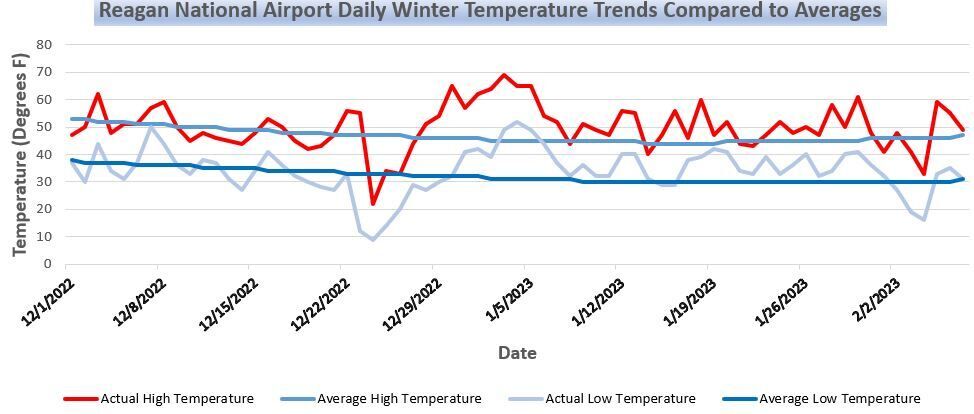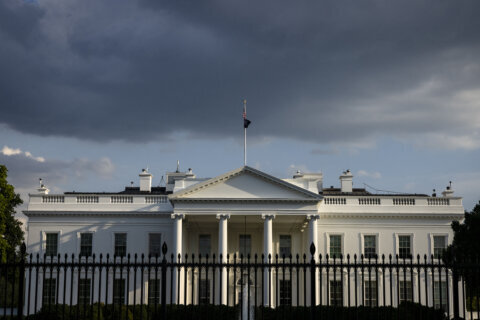The weather this week has been anything but February-like across the D.C. region, and that has confused the trees.
Dry and warm weather with highs in the 60s on Wednesday and Thursday have teased the trees into thinking it’s time for spring. The tree pollen count has skyrocketed this week.
It was the highest of the year Thursday morning with a count of 64.22 grains per cubic meter, which falls in the moderate range. Wednesday’s reading was the first time trees have been in the moderate range for pollen count at 14.38 grains per cubic meter.
Meanwhile, just three days ago, tree pollen was barely observed.

Susan E. Kosisky, chief microbiologist and director at the U.S. Army Centralized Allergen Extract Lab in Silver Spring, said it’s not unusual for tree pollen to register on the scale in January and February in Washington.
Prolific pollen producers in the D.C. area include cedar, cypress and juniper trees. Early this week, those three accounted for 64% of the pollen in the air. Maple and Box Elder pollen accounted for 18% of the pollen.
Kosisky also said it’s not unusual to get moderate tree pollen in early February. The first observed moderate level count last winter occurred on Feb. 16. Digging back through the historical pollen count data, the earliest moderate count for trees registered in the last 10 years was Jan. 15, 2020.
That winter, D.C. only tallied 0.6 inches of snow. The latest moderate tree pollen count year within the last decade was March 9, 2015. Incidentally, during the 2014-15 winter, D.C. saw above average snowfall, with 18.3 inches.
It’s no surprise the trees are responding to what they think is spring. Check out the daily high and low temperature trend so far this winter compared to average.

The only notable dip in temperatures occurred during the transient Christmas Day cold outbreak and the brief blip early last weekend. Otherwise, temperatures have been off to the races.
Not only do the trees react to the warmth, so do D.C.’s famous cherry blossoms. Kosisky indicated the cherry blossoms have responded to the early winter warming in the past few years. We’re now getting into the critical time when they respond the most to warmth, February and March.
Specifically, a warm early March will send the blossoms into full bloom much earlier than the historical peak bloom period of late March to early April.
“Right now, I think it’s reasonable to presume peak bloom will be earlier than the average historic date of April 3,” Mike Litterst, spokesperson for the National Mall and Memorial Parks, told WTOP. “But there’s another six weeks or so of winter to go before we would be looking for peak bloom, so things can change.”
Other than a few very short-lived seasonal blasts, temperatures will stay above average through the end of February. Fortunately, a few weather systems bringing rain will knock down the pollen count every now and then.








